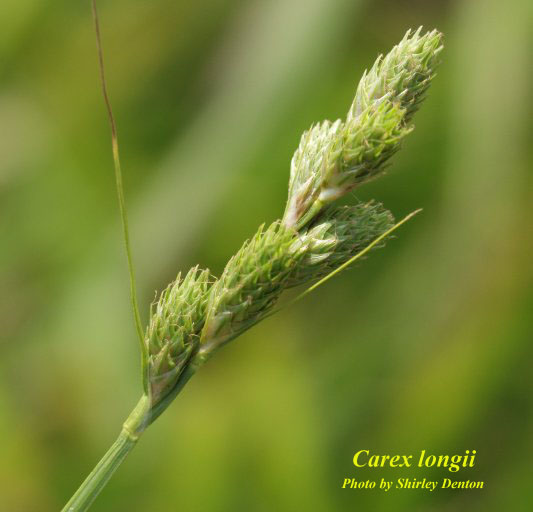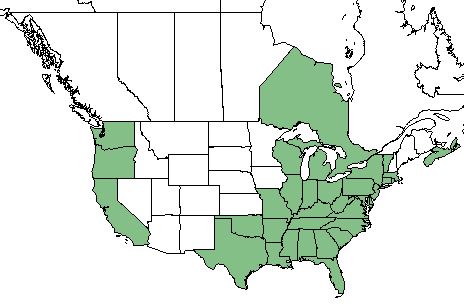Difference between revisions of "Carex longii"
(→Taxonomic Notes) |
(→Phenology) |
||
| Line 36: | Line 36: | ||
===Phenology=== | ===Phenology=== | ||
| − | ''C. longii'' | + | ''C. longii'' has been observed to flower from March to September with peak inflorescence between April and June. <ref name= "Pan FLora"> [http://www.gilnelson.com/PanFlora/ Pan Flora]</ref> |
<!--Timing off flowering, fruiting, seed dispersal, and environmental triggers. Cite PanFlora website if appropriate: http://www.gilnelson.com/PanFlora/ --> | <!--Timing off flowering, fruiting, seed dispersal, and environmental triggers. Cite PanFlora website if appropriate: http://www.gilnelson.com/PanFlora/ --> | ||
<!--===Seed dispersal===--> | <!--===Seed dispersal===--> | ||
Revision as of 18:56, 12 September 2018
Common names: Long's sedge [1] , Greenish-white Sedge [2]
| Carex longii | |
|---|---|

| |
| Photo by the Atlas of Florida Plants Database | |
| Scientific classification | |
| Kingdom: | Plantae |
| Division: | Magnoliophyta - Flowering plants |
| Class: | Liliopsida - Moncots |
| Order: | Cyperales |
| Family: | Cyperaceae |
| Genus: | Carex |
| Species: | C. longii |
| Binomial name | |
| Carex longii Mackenzie | |

| |
| Natural range of Carex longii from USDA NRCS Plants Database. | |
Contents
Taxonomic Notes
Synonyms: Carex albolutescens
Varieties: none
Description
C. longii is a perennial graminoid of the Cyperaceae family native to North America. [1]
Distribution
C. longii is native to the eastern United States and up into eastern Canada, as well as the west coast of the United States. [1]
Ecology
Habitat
The C. longii is commonly found in marsh and other regions with moist soils. [3]
Phenology
C. longii has been observed to flower from March to September with peak inflorescence between April and June. [4]
Conservation and Management
Cultivation and restoration
Photo Gallery
References and notes
- ↑ 1.0 1.1 1.2 USDA Plant Database Cite error: Invalid
<ref>tag; name "USDA" defined multiple times with different content - ↑ Orzell, S. L. and E. L. Bridges (2006). "Floristic composition of the south-central Florida dry prairie landscape." Florida Ecosystem 1(3): 123-133.
- ↑ FSU Herbarium
- ↑ Pan Flora